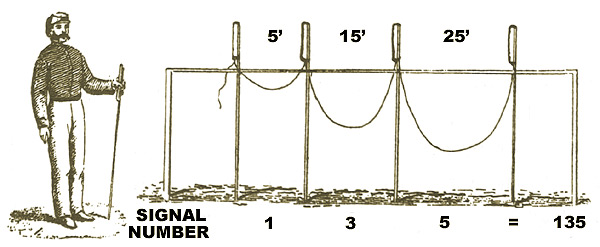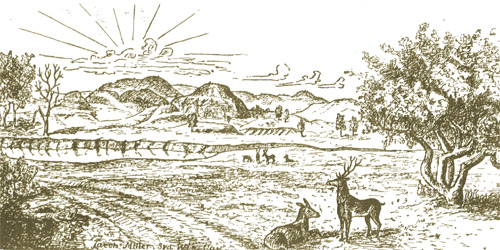
| | SIGNAL ROCKET |
|
When rockets are to be fired, the sticks must be attached; the rockets should be placed upright as upon a frame, or against a fence or post, the paper covering the "choke" orifice is broken, and the firing match, which will then be found, is drawn out to a leanth of two or three inches.
The rocket is fired by igniting this match. If the night is damp, the match ought to be exposed only a moment before the the rocket is fired. If several rockets are to be fired in succession it is well to prepare them all at the same time, and to have them all in position, but each separated from the other, at a distance of at least six feet, else one may ignite the other accidentally. In firing for Chronosemic Signals, one rocket ought to be kept ready upon the frame and in reserve, to be fired in place of any other that may fail.
If a rocket miss fires, it is to be taken from the rack and laid on the ground. Its place is at once supplied by a similar rocket to be fired in its place. The failing rocket is laid on the ground, in order that, if it has only hung fire and should afterwards ignite, it may not disarrange the signal shown. Extra rockets should always be at hand to supply the place of the failing rockets. All rockets near the firing station should be kept in a horizontal position. If the wind blow freshly in any direction, the rocket to be fired should be inclined slightly against the wind. Some pyrotechnists direct the rocket to be inclined with the wind. In default of a stand, or objects against which to place rockets, they may be rested against the hand, held extended at arm's length, and be thus fired.
Experienced pyrotechnists find no difficulty in firing in this manner. The rocket should rest lightly against the hand, which should touch it on the case, and just above the "choke" orifice.
The visibility of the rockets is apt to be overrated by inexperienced signalists. They cannot be successfully used in wooded country. Sometimes when clouds hang low, rockets throw out their stars above the clouds, and thus become invisable. In mountainous sections of the country the rockets will not attract the attention of the observing party unless observers chance to occupy an elevated position or have a comparatively unobstructed view.
In September, 1865, while serving as signal officer with Gen. P. E. Connor, on the Powder River Indian Expedition, a number of parachute rockets were sent up from a point on the Tongue river, twenty-five miles south of the Yellowstone, to learn the whereabouts of the right and centre columns of the expedition. The same was repeated at several camps on the return up the Tongue river, but without gaining reply from Lieut. F. J. Amsden, who was serving with the right column. Afterwards, it was learned that the two columns were at the time on Powder river, where it was impossible to see the rockets on account of a very high "divide" between the Powder and Tongue rivers.
|





